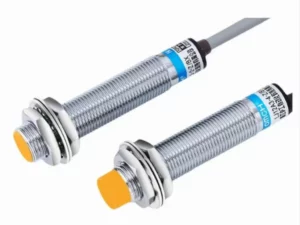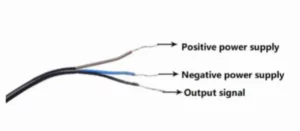What is LJ12A3-4-Z/BX?

-
“LJ” delineates its series, encapsulating its foundational design ethos and contextual applications, signifying its categorization within the echelon of proximity sensors.
-
“12” denotes the sensor’s diameter, precisely 12mm, a dimension critical for ensuring seamless compatibility and integration within diverse operational frameworks.
-
“A3” is indicative of distinct features or configurations, such as detection range or output type, which serve to augment its operational efficiency.
-
“4” conveys a nominal sensing distance of 4mm, a specification central to the sensor’s efficacy in proximity detection.
-
“Z” identifies the sensor’s output as a DC 3-wire type, a pivotal aspect for comprehending its electrical interfacing and integration capabilities.
-
“BX” underscores bespoke modifications or enhancements, ranging from material composition to wiring configurations, that elevate its utility in specific application scenarios.
Understanding the Basics of LJ12A3-4-Z/BX
Technical Specifications
|
Model
|
LJ12A3-4-Z/BX
|
|
Supply Voltage
|
6-36V DC
|
|
Output Current
|
DC type: Max 300mA; AC type: 400mA
|
|
Standard Detection Object
|
Low carbon steel (12x12x1mm)
|
|
Response Frequency
|
500Hz for DC type; 100Hz for AC type
|
|
NPN NO (Normally Open) Output
|
This configuration allows for easy integration with a variety of control systems, including Arduino and Raspberry Pi.
|
How It Works

The LJ12A3-4-Z/BX proximity sensor functions through a sophisticated, precision-engineered inductive detection system, utilizing the principles of electromagnetic field generation. This sensor is characterized by its integration of an advanced oscillator circuit, essential in creating a high-frequency electromagnetic field emitted from its sensing interface, typically a coil or wire loop. This meticulously crafted field is pivotal to the sensor’s operational prowess, specifically designed for the detection of metallic objects in close proximity.
Upon the ingress of a metallic entity into the sensor’s predefined nominal sensing zone, approximately 4mm for the LJ12A3-4-Z/BX, a significant perturbation in the electromagnetic field occurs. This disruption is attributed to an alteration in the sensor’s coil inductance, a reaction to the eddy currents induced in the approaching metal. This inductance variation, marked by discernible shifts in the field’s frequency and amplitude, is astutely detected by the sensor’s intricate circuitry. When this modification exceeds a specific threshold, synonymous with the 4mm distance, the sensor is triggered, transmitting an electrical signal. This operational mechanism is denoted by the ‘Z’ in its model number, indicating a direct current (DC) 3-wire type output. Remarkably, this detection transpires without any physical contact between the sensor and the metallic object, underscoring the sensor’s efficiency and its non-invasive operational approach.
Design and Physical Attributes
-
Dimensions: This sensor exemplifies an optimal integration of form and function, boasting a compact and efficient M12×50 form factor. This design paradigm renders it exceptionally suitable for integration in environments where spatial economy is paramount.
-
Materials: The sensor’s housing, meticulously crafted from nickel-plated brass, has been selected for its superior durability and inherent resistance to corrosion. In synergy with this, the sensing face is constructed from ABS (Acrylonitrile Butadiene Styrene), a polymer distinguished by its outstanding resilience and ability to endure considerable wear, thereby ensuring longevity and consistent performance.
Electrical Specifications
-
Voltage Range: Expertly designed, this sensor seamlessly accommodates a versatile voltage range. It is capable of operating efficiently with either a 6-36V DC power supply or a 90-250V AC source (50/60Hz), thus embodying a remarkable adaptability to varying electrical environments.
-
Output Characteristics: Regarding its output capabilities, the sensor is meticulously engineered to provide a maximum output current of 300mA in DC models. Conversely, AC models are capable of delivering up to 400mA. This robust output specification ensures that the sensor is exceptionally equipped to handle a diverse spectrum of load requirements. Consequently, it becomes an ideal solution for a vast range of operational scenarios where varying power demands are a critical factor.
Sensing Capabilities
-
Detection Range Calibration: This sensor, through meticulous engineering and precise calibration, consistently maintains a steadfast detection range of exactly 4 millimeters. This specification ensures a uniform and reliable detection efficacy, critical for applications demanding high precision.
-
Metal Sensitivity Proficiency: The sensor demonstrates exceptional proficiency in detecting magnetic metals, employing advanced sensitivity settings specifically engineered for such materials. In contrast, its detection capability exhibits a moderately reduced sensitivity when encountering non-magnetic metals, indicating a nuanced variation in its detection proficiency.
Applications in Industry

-
Positioning Control
-
End-of-Travel Sensing
-
Safety Interlocks in Robotics
-
Assembly Line Automation
-
Material Handling Systems
-
Machine Tool Positioning
-
Level and Flow Control
Setting Up the LJ12A3-4-Z/BX
When initializing the LJ12A3-4-Z/BX sensor, it is imperative to first ascertain its compatibility with your existing system infrastructure. The procedure for installing this sensor necessitates the integration of its 1.2-meter Polyvinyl Chloride (PVC) insulated cable with your power source and control apparatus. This cable must be affixed to the sensor with utmost precision, ensuring the opposite terminus is accurately interconnected with your system’s interface.
In compliance with the universally acknowledged M12 mounting protocols, the sensor should be strategically positioned and oriented to facilitate peak operational efficiency. An efficacious installation is characterized by the sensor’s consistent and precise detection of objects within its surveillance radius, devoid of erroneous triggers or oversight. In contrast, any manifestation of irregular responses, connectivity discrepancies, or spurious alerts may be indicative of flawed installation or configuration anomalies.